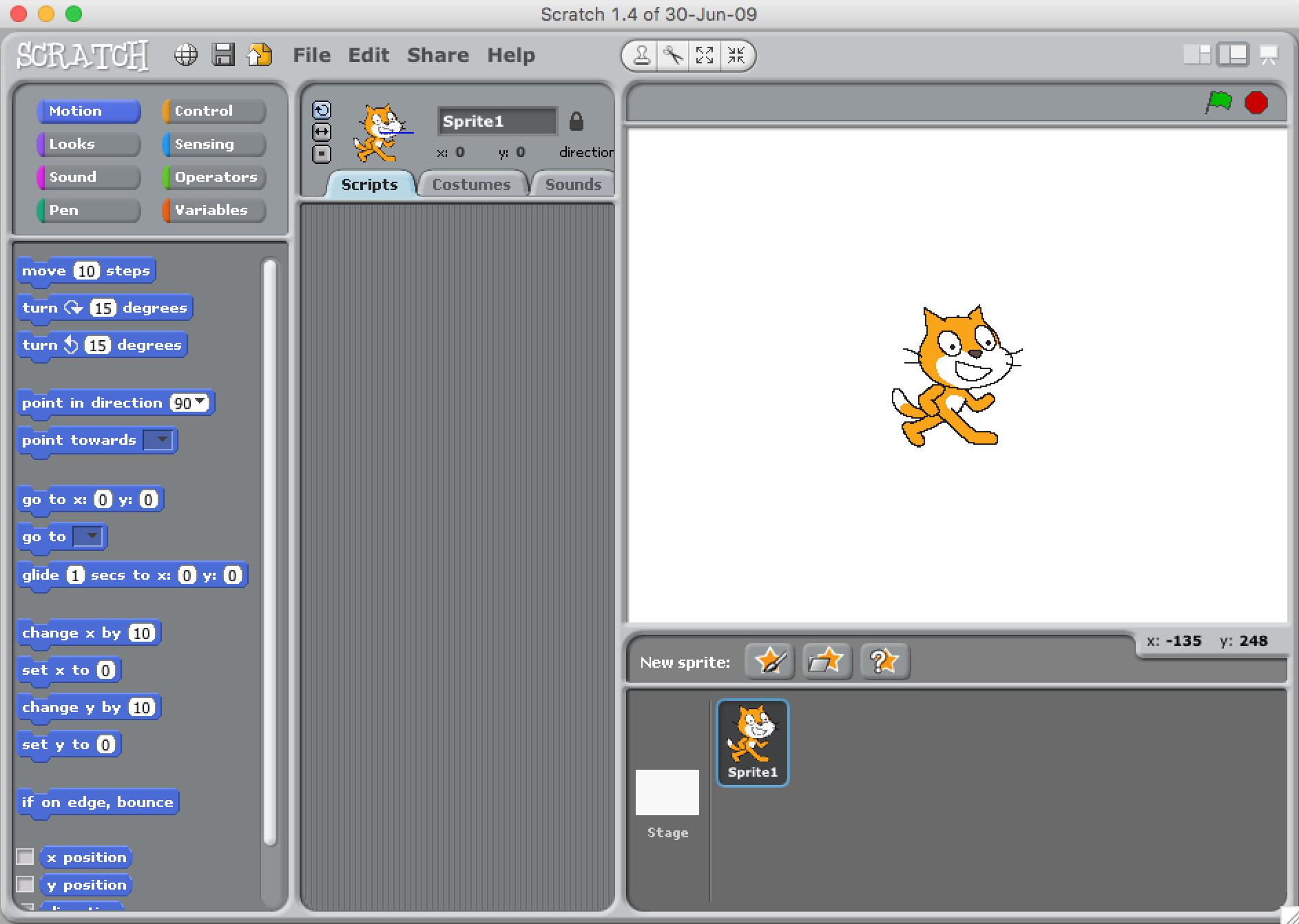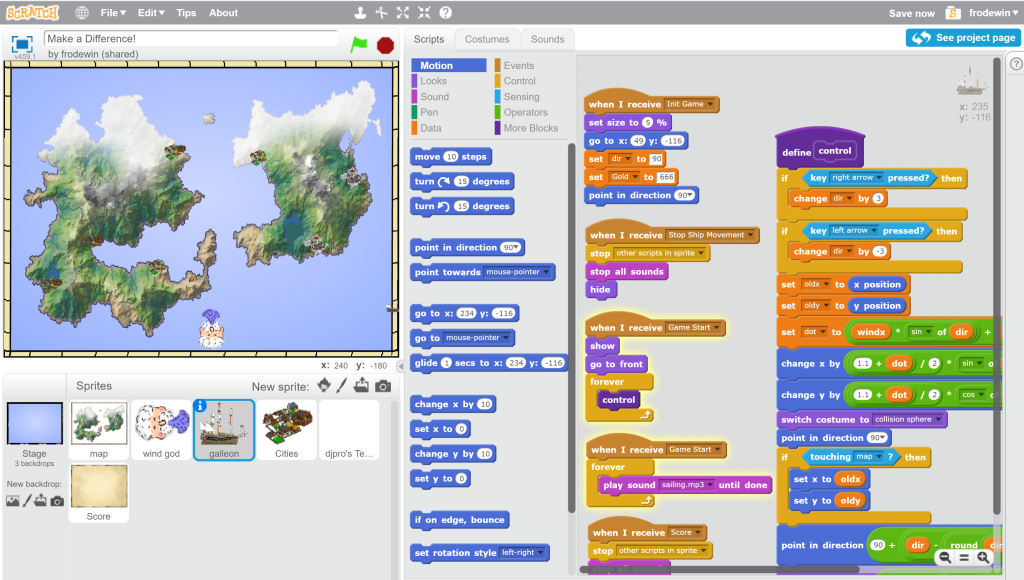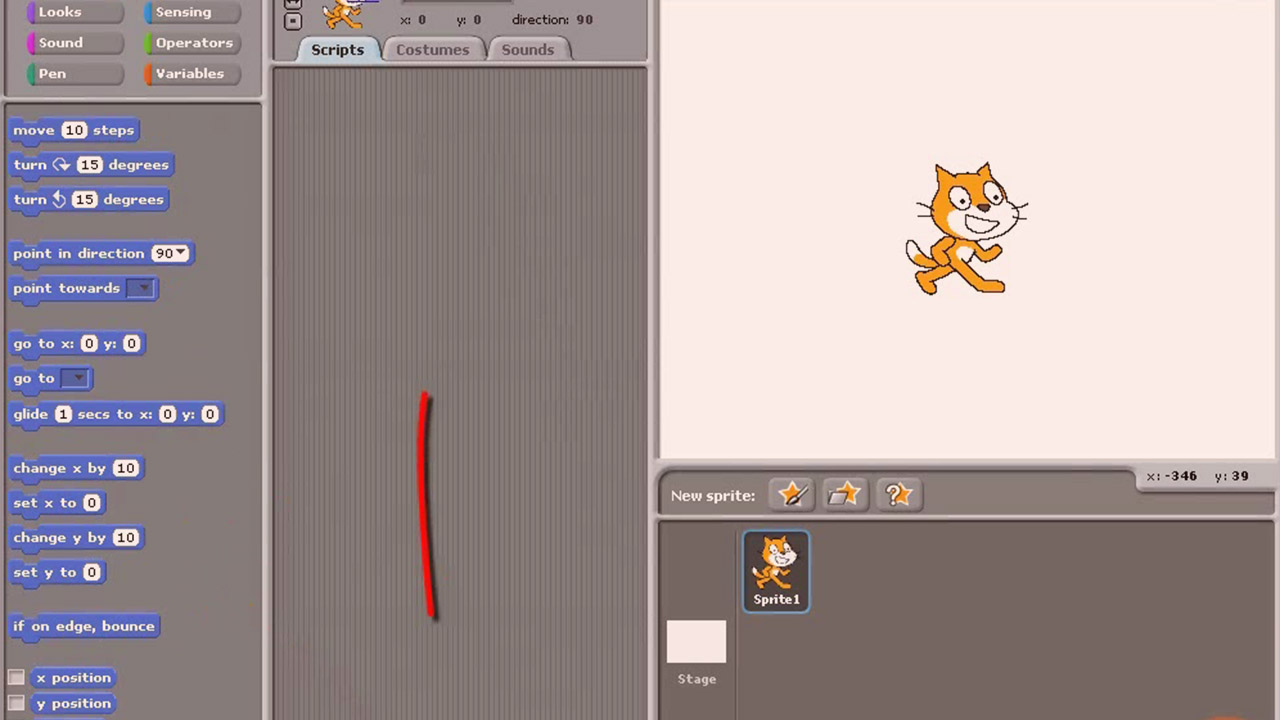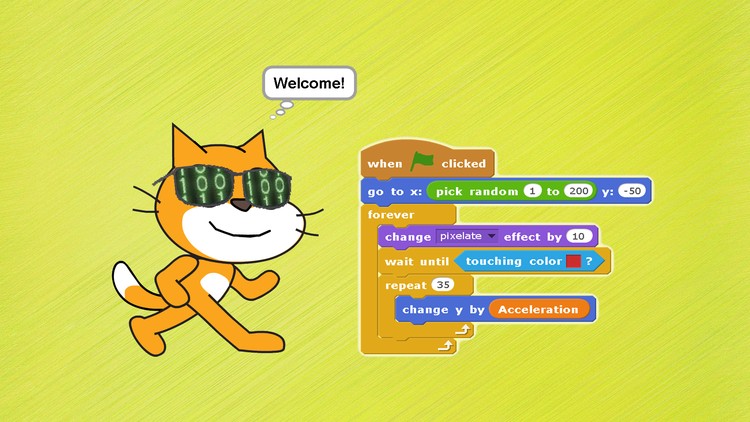

The “look” script ensures that between “cat a” and “cat b” is switched, as long you hold the arrow keys. Should you insert the “0.2” value, then 0.2 seconds will pass before the figure changes its look, which to the motion sequence can seem more natural. Through the subsequent “control” script, confirm the buffer between the costume change. With the event script, assign the desired key – in the case of our Scratch tutorial “Arrow to the right”. So that the catwalks from left to right, for example, as long as you hold down the “Arrow to the right” key, insert the following scripts: In the last step of this short example, we want to get to the main point, which is programming with Scratch and making the figure controllable. Among other things, you will find links for supporting information material for parents and teachers, as well as tips and a FAQ section. About Scratch: If you call up the “About Scratch” menu item, you’ll be directed to a general information page about the Scratch project.You will also find a redirect link for downloading the Scratch app (Windows 10, macOS, ChromeOS, Android) here, which enables you to program without an active Internet connection. Ideas: The “Ideas” section grants you access to different tutorials and guides, which assist you with developing your own projects – in particular when it comes to brainstorming.Projects of a similar type are combined in a “Studio.” In doing so you cannot only playback but also view all of the Scratch programming. Explore: In this category, you can call up the projects of other users.With the help of this web editor, you program all of your Scratch applications directly into the browser. Develop: The central component of the Scratch web project is the graphic development environment, which you launch via the “Development” tab.Hidden behind other available menu items are the following features: parallelism-supporting: The distribution of computer programs in individual sub-components that distinguish the principle of parallel programming is supported in Scratch from the outset.

Through the use of a “Wait Until” block, the loading of a project can also be delayed until the occurrence of a specific event. event-oriented: Every script that you use in a Scratch project starts as soon as the event defined in its header block occurs.Instruction sequences, thus, specify in which sequence which actions should be executed. imperative: Some of the scripts that are made available to you for programming with Scratch follow the imperative programming paradigm.With items such as data encapsulation (controlled access to data via defined interfaces) or polymorphism (objects can assume different data types), however, Scratch demonstrates characteristics of the object-oriented programming concept.


Scratch is based on a graphic user interface that makes complicated language syntax or general code-typing redundant.


 0 kommentar(er)
0 kommentar(er)
